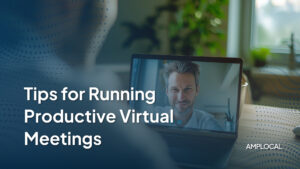In today’s dynamic nonprofit landscape, events that resonate with the public and capture media attention are more crucial than ever. These events, when executed with precision, can become the cornerstone of a successful public relations (PR) strategy. But how did we arrive at this juncture? And how can nonprofits ensure their events not only draw attendees but also make headlines?
Evolution of Nonprofit Events in PR
Nonprofit events have come a long way from their humble beginnings. In the past, they were simple community gatherings—think of local bake sales or town hall meetings. These events, though modest, were vital for early charitable endeavors. As society evolved and technology advanced, so did the scale and scope of these events. Today, we see elaborate galas, celebrity-endorsed charity concerts, and even global virtual fundraisers that serve communities and capture media attention.
Mastering Event Planning and Promotion
- Understanding Your Audience: Every event should begin with a clear understanding of its target audience. Whether it’s local community members, millennials, or corporate sponsors, tailoring the event to their preferences ensures it resonates.
- Strategic Promotion: In our digital age, an event’s promotion can make or break its success. Utilize social media, collaborate with influencers, and employ email marketing to maximize reach. For instance, a wildlife charity successfully trended on Twitter by partnering with a popular influencer who live-tweeted during their event.
- Engage and Inspire: Events should be more than just gatherings; they should tell a story. By intertwining personal narratives or showcasing real-world impacts, nonprofits can create memorable experiences. A children’s charity, for example, showcased the success stories of beneficiaries during their annual gala, leaving attendees inspired and more inclined to donate.
Securing and Leveraging Media Coverage
- Nurturing Media Relationships: Building and maintaining relationships with journalists and media outlets is paramount. Regular updates, exclusive interviews, and behind-the-scenes access can ensure continued coverage.
- Press Releases that Stand Out: In a sea of information, a compelling press release can make all the difference. Highlight unique aspects of the event, provide high-quality images, and always be available for follow-up questions.
- Post-Event Coverage: The event might be over, but its PR potential isn’t. Share success stories, attendee testimonials, and event highlights to keep the momentum going.
Leveraging Events for Donor Engagement
- Personalized Engagement: Use events as platforms to personally connect with donors. Exclusive dinners, one-on-one interactions, or even handwritten thank-you notes can foster stronger relationships.
- Showcasing Tangible Impact: Donors are more likely to contribute when they see tangible results. Use events to showcase how funds have been utilized, be it through video documentaries, beneficiary interactions, or impact reports.
- Creating Exclusive Experiences: Reward top donors with exclusive experiences during events. This could range from special seating, backstage access, or even opportunities to be part of the event’s decision-making process.
Challenges and Overcoming Them
Budget constraints, shifting media landscapes, and changing donor preferences are challenges many nonprofits grapple with. However, with creativity and adaptability, these can be overcome. Collaborate with local businesses, leverage free digital platforms, and always be ready to pivot your strategy based on feedback and results.
Tech Role in Modern Nonprofit Events
In today’s digital era, technology plays a pivotal role in amplifying the reach and impact of nonprofit events. Here’s how:
- Virtual Events: The recent global circumstances have shown us the power of virtual events. They’re not only cost-effective but also have a global reach. For instance, a global health nonprofit recently hosted a virtual marathon, where participants from around the world could join, run in their localities, and share their experiences online.
- Interactive Platforms: Technologies like augmented reality (AR) and virtual reality (VR) are revolutionizing event experiences. Imagine a nonprofit working for wildlife conservation offering VR experiences where attendees can virtually dive into the ocean and see the marine life they’re striving to protect.
- Real-time Engagement: Live polls, Q&A sessions, and interactive webinars can keep the audience engaged and make them feel a part of the event, even from afar.
Collaborations and Partnerships: A Win-Win
Collaborating with corporations, influencers, or other nonprofits can significantly enhance the event’s reach and impact.
- Corporate Sponsorships: Many businesses are eager to align themselves with charitable causes. In return for sponsorship, they get positive PR and brand visibility. It’s a symbiotic relationship where both parties benefit.
- Influencer Collaborations: Social media influencers can bring their vast audience to your cause. A simple shoutout, live coverage, or even an influencer attending the event can skyrocket its popularity.
- Nonprofit Alliances: Sometimes, joining forces with another nonprofit with a similar mission can amplify the impact. Joint events can pool resources, audiences, and expertise.
Feedback Loop: The Key to Continuous Improvement
Post-event feedback is gold. It offers insights into what worked, what didn’t, and how to make the next event even better.
- Surveys and Questionnaires: A simple online survey sent to attendees can provide invaluable feedback. Ask about their overall experience, speakers or sessions they loved, and areas of improvement.
- Social Media Listening: Monitor event hashtags or mentions to gauge the audience’s sentiment. Real-time feedback on platforms like Twitter can be especially insightful.
- Debrief Sessions: Once the event concludes, have a debriefing session with your team. Discuss the highs and lows, and start planning for the next event with the lessons learned.
Conclusion
The world of nonprofit events is dynamic. What worked yesterday might not work tomorrow. However, the core principles remain the same: genuine intent, a clear message, and a relentless pursuit of making a difference. With the right strategies, a dash of creativity, and a pinch of adaptability, nonprofits can host events that resonate, inspire, and drive change.
FAQ’s:
1. What are PR-worthy nonprofit events?
– PR-worthy nonprofit events are gatherings organized by charitable organizations that are designed to capture media attention and resonate with the public, thereby enhancing the organization’s public relations strategy.
2. How have nonprofit events evolved over time?
– Historically, nonprofit events were simple community gatherings like bake sales or town hall meetings. Today, they’ve evolved into elaborate galas, celebrity-endorsed concerts, and global virtual fundraisers.
3. Why is understanding the target audience crucial for an event?
– Tailoring an event to the preferences of its target audience ensures it resonates with them, leading to better engagement and success.
4. How can technology amplify the impact of nonprofit events?
– Technology, especially digital platforms, virtual events, AR, VR, and interactive tools, can enhance the reach, engagement, and experience of nonprofit events.
5. What are the benefits of collaborating with corporations or influencers?
– Collaborations can enhance the event’s reach, bring in additional resources, and provide positive PR for both parties.




